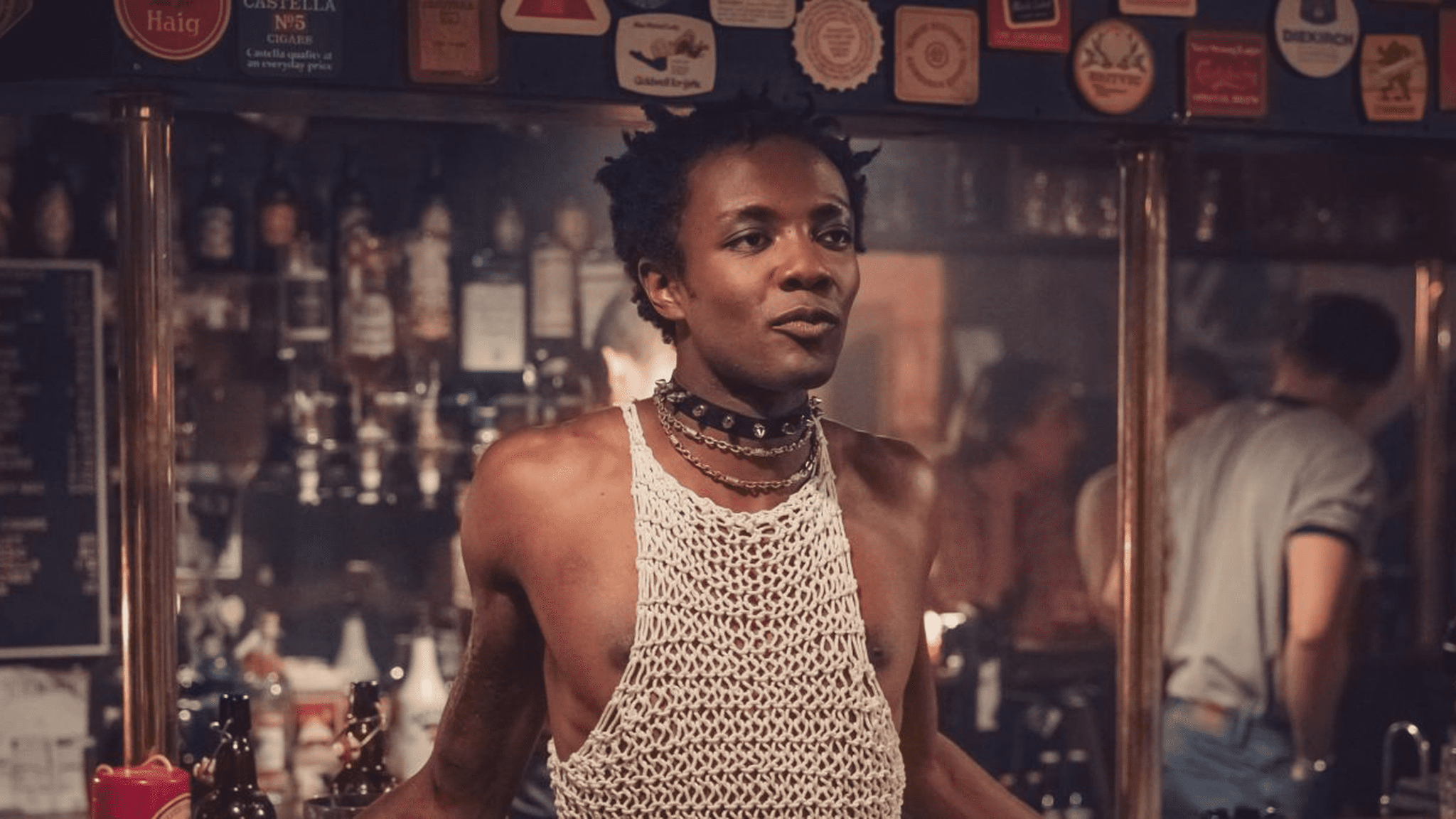Roscoe Babatunde (Omari Douglas) from Channel 4’s It’s a Sin represents the group of people that dared to be different. Fearlessly defiant, bold, and unapologetically gay, he lives without permission. We see him face his parents, date a Tory MP, and wee in Margaret Thatcher’s tea. In the first episode, he confronts his disapproving family as they intend to send him to Nigeria to cure his homosexuality. He stands in the doorway in a crop top and mini-skirt and announces that his address will be ’23 Piss Off Avenue, London W Fuck’. From here on out, we follow a brave young man who shows the middle finger to an unwelcoming society, as other Black LGBTQ+ people like Roscoe were shaping the gay landscape of 80s Britain.
They came from everywhere; in their search for freedom, gay youth left the heteronormativity of small towns to move to the holy site of London. In the on-trend bars of the time, they could finally be who they were for the first time and meet other members of their tribe. Their fashion broke rules and pop punched above all boundaries, with the influences of David Bowie and Prince shaping the music and clothing choices of many gay youth of the time. It was a time of pop icons and flamboyant bands like the Sex Pistols, The Clash and Generation X.
Similarly, London’s legendary Heaven nightclub is one of the most iconic queer nightlife spaces of all time, and club kids like Roscoe weren’t afraid to experiment with fashion. He celebrates his self-expression in the form of blue eyeshadow and leather jackets referencing punk culture, challenging dominant rules and embracing his queer identity in the form of femininity. His image is a conduit for how Roscoe shares his identity with the world unapologetically. Also living with Roscoe at an apartment named the Pink Palace are Ritchie, Colin, Jill, and Ash, who party, love, and live their young freedom together. But while the TV drama presents a multiracial utopia, the reality was far from ideal.
It’s a Sin also invites us to witness an era that is both bitter and sweet, in which individuality and freedom coexisted with tragedy. The 80s were defined by the modernity of pop culture but also the human cost of the AIDS crisis. Although homosexuality had been partially decriminalised in 1967, Thatcher’s introduction of the now-infamous Section 28 anti-gay policy and the sensationalism of the AIDS epidemic reinforced hate against the LGBTQ+ community.
“Roscoe is a paradigm of the people who paved the way for the cultural landscape of the next LGBTQ+ generation.”
Although Roscoe is presented as an ever-strong and fearless Black queer icon, the reality was that he faced an oppressive and discriminatory system. As well as his gayness, Roscoe’s Blackness also defines his experiences and the constraints he had to face. The 80s were hard for one of the most marginalised communities at the time. For people like him, the burden is doubled by discrimination based on both race and sexuality. At that time being Black meant being part of the “other”, which didn’t equal “British”. This struggle for the non-white community, and specifically Black people, existed in all aspects of social life.
80s Britain was a place and a time in which the Black community faced discrimination in housing, schools and social services. For people like Roscoe, that social inequality meant being left out from the AIDS crisis support. While health services were there, they didn’t necessarily meet the culturally specific needs of Black gay men. That meant another layer of suffering and discrimination on top of the shame and fear attached to the virus.
Being Roscoe was not easy, but he and many Black queer individuals were both utterly themselves, and impressively resilient. The lack of representation and the stereotypes around minorities forced Black queer people to find their path and create their own image. They were daringly camp, challenged all heteronormative rules, and played a significant role in British cultural history. Roscoe is a paradigm of the people who paved the way for the cultural landscape of the next LGBTQ+ generation. The importance of the character as someone who leads his own path without conforming in any way inspires this generation; a personality that was then mocked, is now celebrated.
It’s A Sin should be praised for having such a vibrantly queer Black character. But the fact that it feels so new and groundbreaking is a reminder that there is still the need for more representation and visibility. Episode after episode, one can’t help but be mesmerised by Roscoe’s attitude and boldness. He is stylish, fun, brave, strong and always himself. There is so much to learn from him, and his qualities are worth taking inspiration from. Watch just one episode and let Roscoe’s essence inspire you.
Words by Salma Ouaguira
Support The Indiependent
We’re trying to raise £200 a month to help cover our operational costs. This includes our ‘Writer of the Month’ awards, where we recognise the amazing work produced by our contributor team. If you’ve enjoyed reading our site, we’d really appreciate it if you could donate to The Indiependent. Whether you can give £1 or £10, you’d be making a huge difference to our small team.
